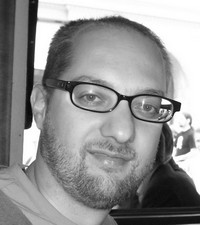Michele Carboni | University Politecnico di Milano
13th January, 2012
Dr. Michele Carboni, researcher and CIVA user at the Department of Mechanical Engineering of the University Politecnico di Milano, kindly accepted to answer our questions.

When did you become a CIVA user?
I started to work with CIVA with version 8.1 in 2006.
For which type of activities do you use CIVA?
Being part of the academic staff of the Department of Mechanical Engineering at Politecnico di Milano (Italy), I’m mainly interested in research topics related to the NDT field and my use of CIVA greatly reflects this situation. Since I’m also responsible for the course on “Experimental Mechanics and NDT” held for our Master of Science students, some important applications of CIVA regard also teaching.
What convinced you to use simulation?
This is an interesting question. In the last ten years, a need for completing and supporting experimental results with numerical simulations arose in the NDT community. This is due to the very expensive costs that sometimes the experimental campaigns require. I started to use and research about NDT simulation in order to bring my contribution to this new way of thinking.
What did it change for you?
It gave me the possibility to add to my usual researches and methodologies new perspectives and new tools. I have to say that I’m very satisfied with the opportunity that simulation gives me in understanding and interpreting some experimental results I get during tests. Moreover, I was also able to get good predictions of experimental results.
Could you give us an overview on the research projects you are involved in?
My main research topic is structural integrity. I started in 1997, studying and researching fatigue and fracture mechanics as an MSc student, and I went on in my PhD thesis too. In 2006, I began to have also interest in NDT. I had the possibility to participate and work in the frame of different regional, national (Italian) and European projects. Most of them dealt with the structural integrity of railway axles. At the moment, I’m working on the “Probability of Detection” and “Model-Assisted Probability of Detection” curves for the ultrasonic inspection of railway axles, and on the application of Eddy Currents inspection to the detection of corrosion-fatigue damage on railway axles.
In which applications has simulation been particularly beneficial to your work?
For sure in the last topics I mentioned in the previous question. The “Model-Assisted Probability of Detection” approach is expressly based on the idea to mix experiments and numerical results, so simulations are of fundamental importance. I also found very useful to use simulation to understand the behaviour of Eddy Currents on a multiple-cracked body, like a fatigue-corroded railway axle.
What additional features would you like to be implemented in CIVA?
More flexibility on some aspects of the POD and the ET modules, because sometimes they do not allow to represent the physical problem I would like to simulate.
